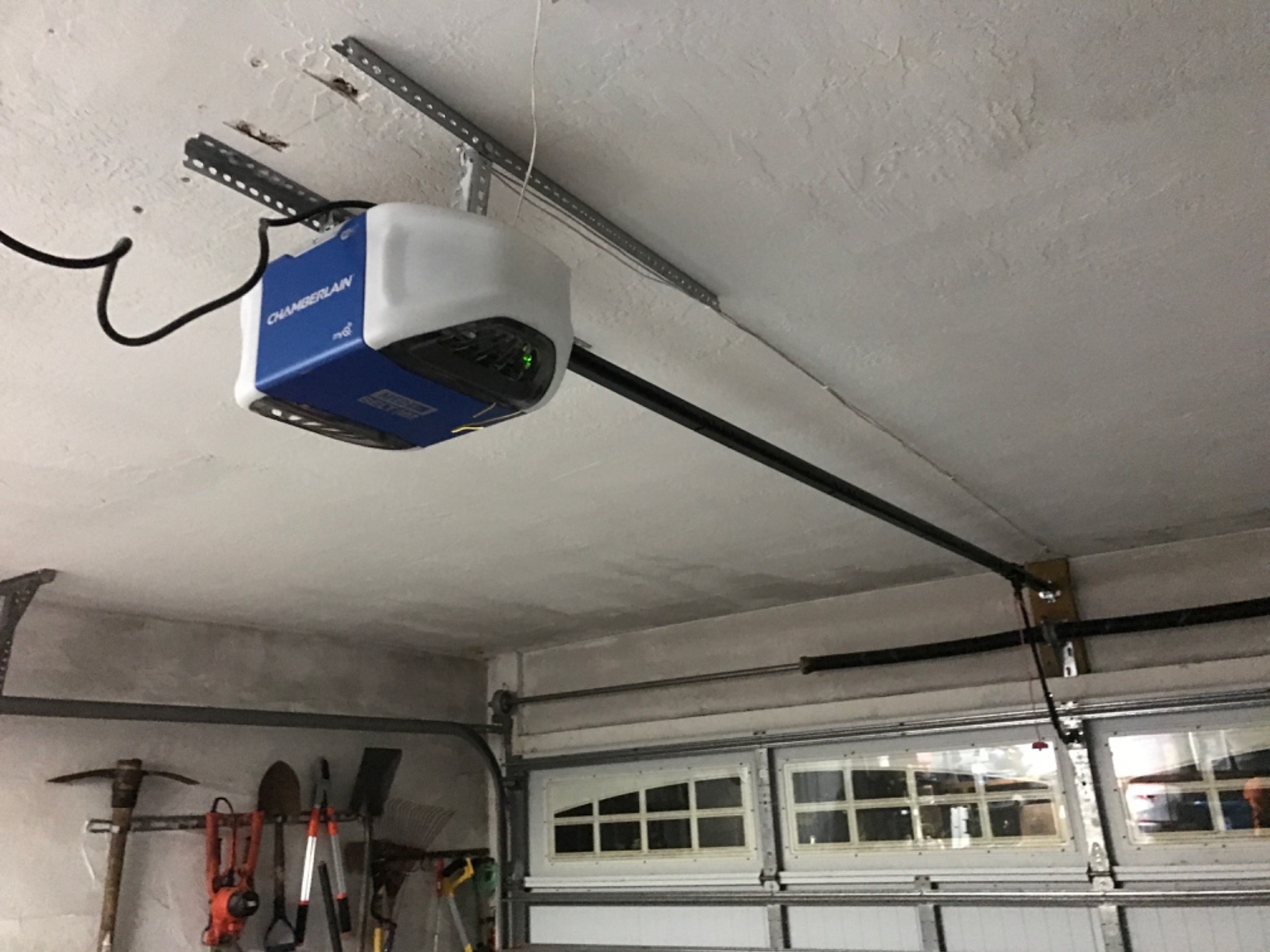
How Do I Change the Battery in the Garage Door Opener?
In the realm of home maintenance, certain tasks stand out for their simplicity yet hold immense importance in our daily convenience and security. Among these tasks, changing the battery in your garage door opener occupies a unique position. It’s a chore that many might overlook until the moment their garage door refuses to budge, leaving them either stranded outside their garage or unable to secure it. This seemingly minor maintenance task, however, is pivotal in ensuring the seamless operation of one of your home’s primary access points.
The garage door is more than just a physical barrier; it’s a key component of home security, a guardian of our vehicles, and often a secondary entry to our living spaces. Thus, ensuring its optimal functionality through something as simple as a battery change in the opener is not just about convenience but about maintaining the security and functionality of our homes. This comprehensive guide is designed to walk you through the process of changing the battery in your garage door opener, covering safety considerations, necessary tools, and step-by-step instructions. Whether you’re a seasoned DIY enthusiast or a novice in home maintenance, this guide aims to equip you with the knowledge and confidence to tackle this task efficiently and safely.
Prioritizing Safety
Changing the battery in your garage door opener is generally safe, but taking precautions is crucial to prevent accidents. Before you begin, take these safety steps:
- Disable Power: Although changing the remote’s battery doesn’t typically expose you to direct electrical connections, it’s wise to disable any power source to the garage door opener system to eliminate any risk.
- Avoid Heights: Make sure the garage door is closed and avoid using a ladder or placing yourself in a situation where you might fall if the door unexpectedly operates.
Necessary Tools and Materials
To ensure a smooth battery replacement process, gather the following items before you start:
- Correct Battery Type: Check your garage door opener’s manual or the existing battery to confirm whether you need AA, AAA, 9V, or another type of battery.
- Screwdriver: Some remote controls or wall units require a Phillips or flathead screwdriver to open the battery compartment.
- Safety Gloves: Optional but recommended for handling batteries, especially if you need to clean out battery corrosion.
Step-by-Step Guide
- Identifying Your Opener Type: Garage door openers come in various forms, including remote controls, key fobs, and wall-mounted units. Identifying your type is crucial as it dictates the battery type and how to access the battery compartment.
- Opening the Battery Compartment: This step varies with the opener model. For handheld remotes, look for a slide panel or a screw that secures the battery cover. Wall-mounted units often have a panel that snaps open or is secured with screws.
- Identifying and Purchasing the Correct Battery: Observe the old battery to determine the correct size and voltage required. It’s a good practice to purchase batteries from reputable brands to ensure longevity and reliability.
- Removing the Old Battery: Carefully extract the old battery, paying attention to how it was installed. Noting the battery’s orientation is crucial for installing the new battery correctly.
- Installing the New Battery: Insert the new battery in the same orientation as the old one. Ensure the battery contacts are clean and making good contact with the new battery.
- Securing the Battery Compartment: Replace the cover of the battery compartment. If it involves screws, tighten them without over-tightening, as this could strip the threads or damage the cover.
- Functionality Test: Test the garage door opener with the new battery by attempting to open and close the garage door. If the door responds to the remote, the battery replacement has been successful.
Advanced Troubleshooting
If the garage door opener does not work after replacing the battery, consider these troubleshooting steps:
- Correct Installation: Recheck the battery orientation and ensure it’s correctly installed.
- Battery Contact Issues: Clean the battery contacts in the compartment if they appear corroded or dirty.
- Remote Reprogramming: Some models require the remote to be reprogrammed after battery replacement. Refer to the user manual for specific instructions.
Maintenance Tips and Best Practices
- Regular Checks: Periodically test your garage door opener to ensure it’s always in working order.
- Quality Batteries: Use high-quality batteries to avoid frequent changes and ensure the longevity of the remote.
- Professional Help: If you encounter issues beyond basic troubleshooting, consider seeking professional assistance from a garage door specialist.
Choosing the right battery for your garage door opener is crucial for ensuring it operates efficiently and reliably. Here are some key insights and considerations about batteries for garage door openers:
Battery Types and Sizes
- Remote Control Openers: Most handheld remote controls for garage door openers use standard battery sizes, such as AAA, AA, or 9V batteries. The exact size and type depend on the design of the remote. It’s important to check the user manual or inspect the current battery to determine the correct type.
- Wall-mounted Controls and Keypads: These may also use standard batteries, but it’s not uncommon for them to require specific lithium battery models, such as CR2032 or CR123A, which are known for their long lifespan and reliability in a wide range of temperatures.
- Backup Batteries for Opener Units: Many modern garage door opener units come with a built-in backup battery system to keep the garage door operational during power outages. These are often specific battery types, such as lead-acid or rechargeable lithium-ion batteries, and may require special handling and replacement procedures.
Battery Life and Replacement Frequency
- Remote Controls: The batteries in remote controls can last anywhere from 1 to 2 years, depending on usage frequency. It’s a good practice to replace batteries in all remotes at the same time if you have multiple units.
- Backup Batteries: The lifespan of built-in backup batteries in garage door opener units typically ranges from 2 to 5 years. However, this can vary based on the frequency of power outages and the battery’s quality.
Performance in Various Conditions
- Temperature Sensitivity: Battery performance can be affected by extreme temperatures. Lithium batteries are generally more resistant to cold weather conditions than alkaline batteries, making them a better choice for garage environments that experience significant temperature fluctuations.
- Maintenance and Care: To maximize battery life and performance, keep the battery contacts clean and free of corrosion. For devices that are not used frequently, consider removing the batteries to prevent leakage and damage over time.
Choosing the Right Battery
- Brand and Quality: Invest in high-quality batteries from reputable brands to ensure reliability and longevity. Cheaper, lower-quality batteries may not last as long and could leak, causing damage to the remote control or opener unit.
- Environmental Considerations: Consider the environmental impact of your batteries. Rechargeable batteries, while initially more expensive, can be a more sustainable option over time, reducing waste and the need for frequent replacements.
Conclusion
In wrapping up this comprehensive guide to changing the battery in your garage door opener, it’s essential to reiterate the significance of this seemingly modest task. Beyond the immediate benefit of restoring functionality to your garage door, this maintenance activity serves as a poignant reminder of the small, often overlooked actions that contribute significantly to our daily comfort and security. Regularly checking and replacing the battery in your garage door opener not only ensures uninterrupted access to and from your garage but also upholds the reliability of a crucial component of your home’s security system.
Moreover, this guide underscores the value of proactive home maintenance. By familiarizing yourself with the steps to undertake such tasks, you empower yourself to keep your home running smoothly, potentially averting inconvenient or even hazardous situations before they arise. Whether your garage door opener needs a new battery today or you’re preparing for future maintenance, your efforts contribute to creating a safe, secure, and comfortable home environment. Remember, the key to efficient home maintenance lies not just in responding to issues of garage door opener or any other as they occur but in anticipating and preventing them through regular care and attention.



